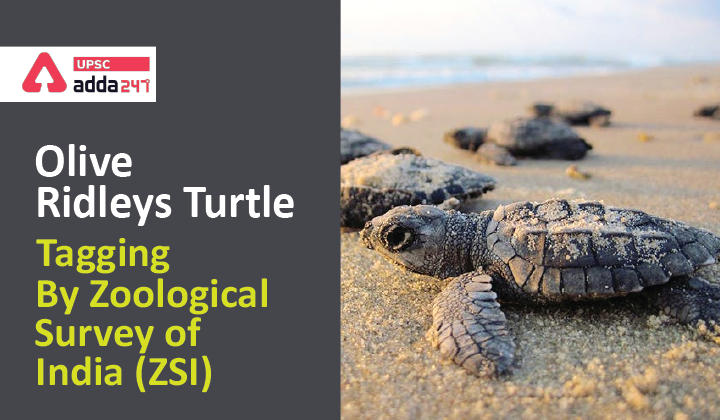Table of Contents
Olive Ridley Turtle- Relevance for UPSC Exam
- GS Paper 3: Environment- Conservation, environmental pollution and degradation.
Olive Ridley Turtle- Context
- Recently, Scientists have resumed tagging of Olive Ridley turtles at Rushikulya rookery along the Odisha coast.
Behler Turtle Conservation Award
Olive Ridley Turtle- Olive Ridley Turtle tagging and benefits
- Olive Ridley Turtle Project: Researchers of the Zoological Survey of India (ZSI) are carrying out tagging of the Olive Ridleys at three mass nesting sites- Gahirmatha, Devi River mouth and Rushikulya.
- The Olive Ridley Turtle tagging exercise was undertaken in Odisha in January 2021 after a span of about 25 years and 1,556 turtles had been tagged.
- Associated Benefits:
- Olive Ridley sea turtles tagging would help in identifying the migration path and places visited by Olive Ridley turtles after congregation and nesting.
- Besides, the growth of the Olive Ridley Sea Turtles could be measured during the current study.
- The study would also reveal the inter-rookery movement of Olive Ridley turtles in Odisha.
- The migration pattern of Olive Ridley Turtle of Odisha to other countries would be recorded in detail.
Forest Conservation Act (FCA), 1980- Proposed Amendments to FCA
Olive Ridley Turtle- Key Points
- About: Olive Ridley Sea Turtles derive their name from their olive-colored carapace. Olive Ridley Sea Turtles are the smallest and most abundant of all sea turtles found in the world.
- Eating habit: Olive Ridley Sea Turtles are
- Habitat:
- Globally: Olive Ridley Turtles are found in warm waters of the Pacific, Atlantic and Indian oceans.
- In India: Odisha Coast is known for its breeding grounds for Olive Ridley Turtles. Odisha’s Gahirmatha Marine Sanctuary is the world’s largest colony of breeding of Olive Ridley
- Arribada (Mass Nesting): Mass nesting of Olive Ridley Turtle in Odisha is also known as Arribada where thousands of females come together on the same beach to lay eggs.
- The olive ridley turtles turn up in millions for mass nesting along the Odisha coast every year namely at three river mouths- Dhamara, Devi and Rushikulya.
Deepor Beel Wetland and Wildlife Sanctuary
Olive Ridley Turtle- Protection Status
- Wildlife Protection Act, 1972: Olive Ridley Turtle is listed under Scheduled 1 of the WLP Act.
- IUCN Red List: Olive Ridley Sea Turtles are put in the ‘Vulnerable’ category in the Red Book List of IUCN.
- CITES: Olive Ridley Turtle is listed under ‘Appendix I’ of the Convention on International Trade in Endangered Species of Wild Fauna and Flora (CITES).
Marine Litter and Plastic Pollution Report by UNEP




 TSPSC Group 1 Question Paper 2024, Downl...
TSPSC Group 1 Question Paper 2024, Downl...
 TSPSC Group 1 Answer key 2024 Out, Downl...
TSPSC Group 1 Answer key 2024 Out, Downl...
 UPSC Prelims 2024 Question Paper, Downlo...
UPSC Prelims 2024 Question Paper, Downlo...




